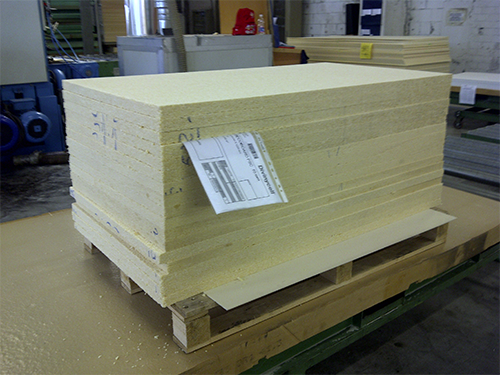 Making polymeric rigid foam for wind power turbines and more efficient trains can have a downside: the scrap and dust from the manufacturing. Diab has developed a way to keep that waste from landfills and turn it into other building materials for the circular economy.
Making polymeric rigid foam for wind power turbines and more efficient trains can have a downside: the scrap and dust from the manufacturing. Diab has developed a way to keep that waste from landfills and turn it into other building materials for the circular economy.
“It’s part of our effort to contribute to sustainable development,” says Eva-Lotta Petersson, R&D engineer for sustainability. “We make cores for example for wind turbine blades and lighter trains and boats, but we don’t want to pollute while doing that.”
Diab has developed a way to take care of its own waste disposal by processing and reusing the scraps and dust left from manufacturing of polymeric rigid foams. The leftovers are ground and mixed with glue, then pressed into a light low-end core that can be used in construction.
“Instead of sending our waste or scrap to landfill or incineration we continuously develop methods to transform it into a useful product. This way we reduce waste disposal,” Petersson says.
Diab calls Recoboard cost-efficient sandwich core material for non-structural applications, with good thermal and sound insulation.
Diab’s other circular economy developments include parts for tidal power turbines, a battery-powered catamaran and a floating Power Dock to recharge boat batteries. Its Laholm, Sweden, plant is to switch entirely to biofuels by next January. More info in their video and their website.
